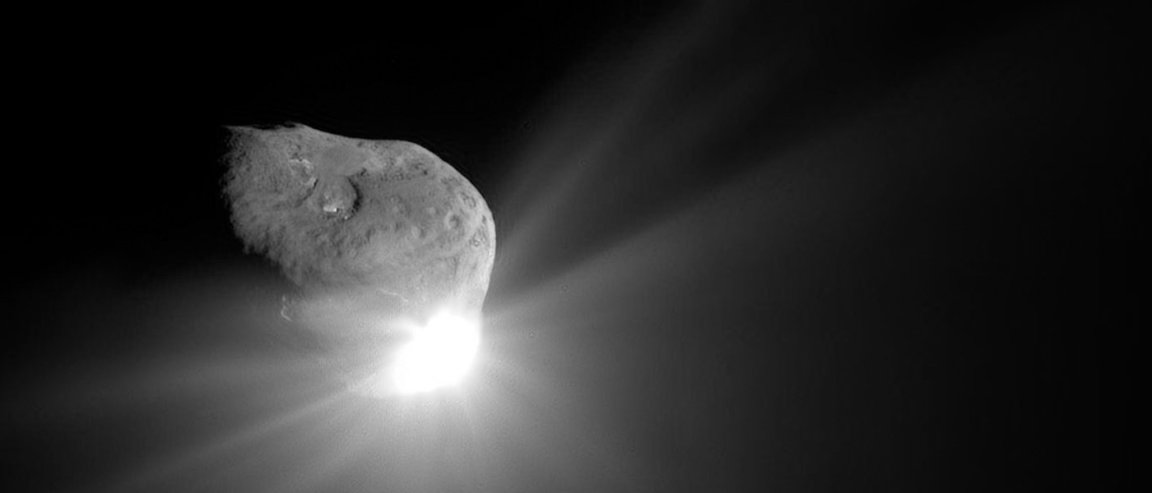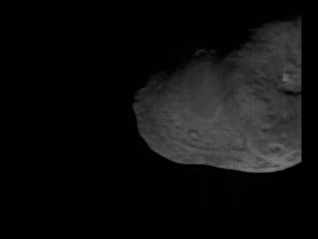
Our Young Earth
Let’s go back 4 billion years, when our solar system wasn’t exactly our solar system yet. The planets weren’t neatly formed in their orbits, and Earth was getting bombarded by meteors over and over and over again – for 200 million years.
This is what’s known as the “Late Heavy Bombardment (LHB).” Around 22,000 space objects, including comets, hit Earth during the LHB. We could expect that events like these would prevent any sort of life from existing. The sheer number of impacts would wipe out anything (and everything).
But recent research has found that large comets ranging over 10 kilometers (6.2 mi) in radius might contain liquid water at their cores—the substance of life. Katharina Bosiek and her colleagues discovered that a thick layer of dust could protect the liquid from solar radiation.
This makes the theory of “panspermia” (which suggests that life on Earth did not originate on our planet, but was transported here from somewhere else in the universe) more than mere skepticism. To clarify, this theory states that the substance of life exists in space within objects such as asteroids, meteoroids, and comets. And now we have new evidence to suggest that these objects could have seeded Earth with life.
Their findings are published in the journal Astrobiology.
Life-Giving Comets
We also have NASA to thank for supporting this theory with their findings. In 2005, NASA scientists launched a 376 kg (820 pound) impactor at the Tempel 1 comet. The Deep Impact probe floated nearby the impactor to capture the collision. And when the collision occurred, it sent an incredibly massive amount of dust and particulate matter spewing everywhere. What the Deep Impact probe found after the collision were silicates, carbonates, metal sulfides, amorphous carbon, hydrocarbons, and ice water.

The Deep Impact mission provided evidence that frozen water, rock, and certain gases combined could create life. Could comets, when colliding with an object, release its life-giving substance and kickstart the organic process?
“Supposing comets were seeded with microbes at the time of their formation from pre-solar material, there would be plenty of time for exponential amplification and evolution within the liquid interior,” claimed Nalin Chandra Wickramasinghe, a Cardiff University astrobiologist and one of the first supporters of the panspermia theory.
So that means that when a comet smashes into an object, it shatters and releases its “seed” into fertile ground, planting the components of life to grow and evolve. Recent research also suggests that the impact of organic compounds from the comet could form peptides – the building blocks of proteins.
With this supporting evidence, we could probably picture 4 billion years ago as being just a huge rainstorm of life. But it’s hard to imagine what could possibly exist in the vacuum of space that would contribute to its formation. Believe it or not, some things can exist out there.
If comets contain the building blocks of life, and it seems they do, there’s no reason to doubt that life exists outside of our solar system.